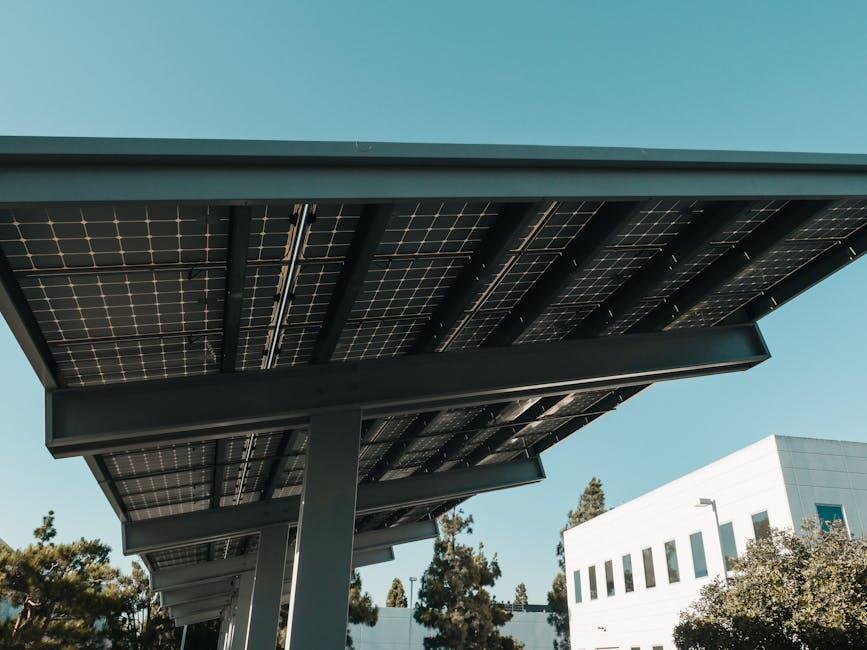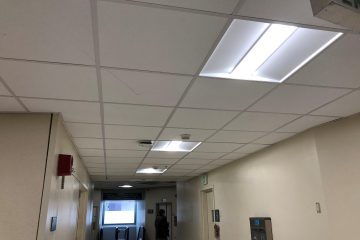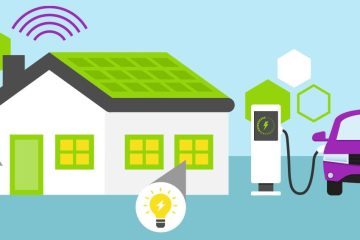In a world where environmental consciousness is on the rise, the pursuit of energy efficiency has become a paramount goal for many. One prominent player in this arena is LEED (Leadership in Energy and Environmental Design), a globally recognized green building certification system. Join us on a journey to explore the symbiotic relationship between energy efficiency and LEED certification, where innovation meets sustainability to shape a greener future for generations to come. Let’s delve into the fascinating realm of energy efficiency through the lens of LEED and uncover the transformative power of eco-conscious design principles.
Table of Contents
- The Impact of Energy Efficiency on LEED Certification
- Innovative Strategies for Boosting Energy Efficiency in LEED Projects
- Best Practices for Sustainable Energy Solutions in LEED Buildings
- Maximizing Energy Savings: Practical Tips for LEED Energy Efficiency
- Q&A
- Insights and Conclusions
The Impact of Energy Efficiency on LEED Certification
One key aspect that greatly influences a building’s LEED certification is its energy efficiency performance. By focusing on sustainable practices that reduce energy consumption, a project can significantly increase its chances of achieving LEED certification. Incorporating energy-efficient technologies and strategies not only benefits the environment but also plays a crucial role in meeting the strict criteria set by the LEED certification program.
Efficient energy use leads to lower operational costs over time, making it a cost-effective solution for building owners. From smart lighting systems to high-performance insulation, every energy-saving element contributes to a greener and more sustainable structure. By prioritizing energy efficiency in the design and construction phases, a building can maximize its potential to earn valuable LEED points, ultimately leading to a higher certification level.

Innovative Strategies for Boosting Energy Efficiency in LEED Projects
Enhancing energy efficiency in LEED projects requires a blend of creativity and practicality. One effective strategy is to incorporate smart lighting systems that adjust based on natural light levels and occupancy sensors. These systems not only reduce energy consumption but also enhance the overall ambience of the space. Implementing green roofs is another innovative approach that helps regulate indoor temperatures, reduce heat island effect, and improve air quality within the building.
Opting for energy-efficient HVAC systems can significantly impact the overall energy consumption of a LEED project. Consider investing in variable refrigerant flow (VRF) systems that offer precise control over individual zones, optimizing energy usage while ensuring personalized comfort for occupants. Additionally, integrating renewable energy sources such as solar panels or wind turbines can further reduce the building’s reliance on traditional power grids, leading to long-term cost savings and environmental benefits.
| Sustainability Strategies | Benefits |
|---|---|
| Smart Lighting Systems | Reduce energy consumption and enhance ambiance |
| Green Roofs | Regulate indoor temperature and improve air quality |
| VRF HVAC Systems | Precise control over energy usage for personalized comfort |
| Renewable Energy Sources | Reduce reliance on traditional power grids for cost savings |


Best Practices for Sustainable Energy Solutions in LEED Buildings
In the quest for sustainable energy solutions within LEED buildings, prioritizing energy efficiency is paramount. By implementing best practices, these structures can significantly reduce their environmental impact and operational costs over time. Utilizing a combination of innovative technologies, strategic design elements, and efficient systems can pave the way for a greener and more cost-effective future for urban developments.
Embracing renewable energy sources such as solar panels and geothermal systems can transform buildings into energy-efficient powerhouses. Optimizing insulation, lighting, and HVAC systems can further enhance energy performance. By fostering a culture of sustainability and continuous improvement, LEED buildings can serve as beacons of eco-conscious design and operation in the modern architectural landscape.
| Energy Efficiency Strategies | Benefits |
|---|---|
| Solar Panels | Generate clean energy and reduce electricity costs. |
| Geothermal Systems | Utilize the Earth’s natural heat for efficient heating and cooling. |
| LED Lighting | Lower energy consumption and enhance lighting quality. |


Maximizing Energy Savings: Practical Tips for LEED Energy Efficiency
Want to make your space more energy-efficient while achieving LEED certification? Here are some practical tips to help you maximize energy savings:
- Opt for LED Lighting: Replace traditional light bulbs with energy-efficient LED bulbs to reduce electricity consumption.
- Seal Air Leaks: Properly seal windows, doors, and gaps to prevent energy loss and maintain a well-insulated space.
- Utilize Natural Light: Make the most of natural light through windows and skylights to reduce the need for artificial lighting during the day.
By implementing these strategies, you can improve energy efficiency in your building and work towards achieving LEED certification more effectively.
Q&A
**Q&A: Energy Efficiency LEED**
Q: What is LEED and how does it relate to energy efficiency?
A: LEED stands for Leadership in Energy and Environmental Design and is a globally recognized green building certification program. It promotes energy efficiency by providing guidelines and standards for sustainable building practices.
Q: Why is energy efficiency important in the context of LEED certification?
A: Energy efficiency plays a crucial role in LEED certification as it helps reduce the environmental impact of buildings, lowers energy costs, and creates healthier indoor environments for occupants.
Q: How can builders and architects incorporate energy efficiency into LEED projects?
A: Builders and architects can integrate energy-efficient design elements such as proper insulation, high-efficiency heating and cooling systems, and energy-efficient lighting to meet LEED requirements.
Q: What are the benefits of achieving energy efficiency in LEED-certified buildings?
A: The benefits of energy efficiency in LEED-certified buildings include reduced carbon footprint, operational cost savings, improved indoor air quality, and enhanced building performance and resale value.
Q: How can individuals contribute to energy efficiency in their daily lives beyond LEED-certified buildings?
A: Individuals can contribute to energy efficiency by using energy-saving appliances, practicing conservation habits, utilizing natural light, and supporting sustainable initiatives in their communities.
Q: In what ways does LEED certification promote a more sustainable future through energy efficiency practices?
A: LEED certification promotes a more sustainable future by encouraging the adoption of energy-efficient technologies, materials, and construction practices that reduce energy consumption and minimize environmental impact.
Insights and Conclusions
As you embark on your journey to embrace energy efficiency and LEED practices, remember that small changes today can lead to significant impacts tomorrow. By incorporating sustainable design principles and green building strategies, you not only reduce your environmental footprint but also create healthier and more efficient spaces for all. Let innovation guide your path and let sustainability be your compass as you navigate the ever-evolving landscape of energy-efficient design. Together, we can build a brighter, greener future for generations to come. Thank you for joining us on this enlightening exploration of energy efficiency and LEED.




0 Comments